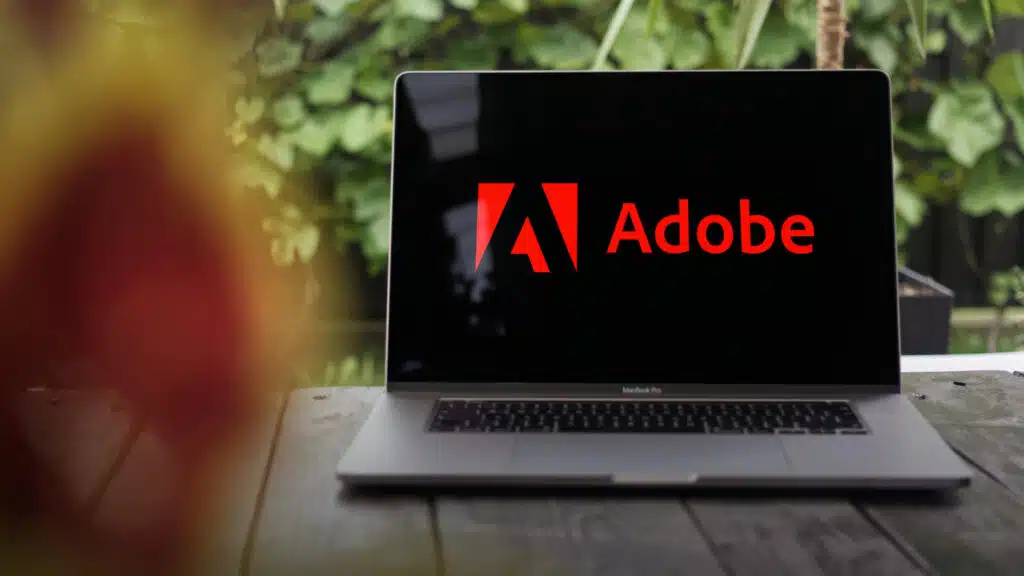The News: Dell Technologies announced financial results for its fiscal 2024 fourth quarter (Q4) and full year. Q4 revenue was $22.3 billion, down 11% year-over-year (YoY). Operating income was $1.5 billion and non-GAAP operating income was $2.1 billion, up 25% and down 1% YoY, respectively. Cash flow from operations was $1.5 billion. Diluted earnings per share (EPS) was $1.59, and non-GAAP diluted EPS was $2.20, up 89% and 22% YoY, respectively. Revenue for the year was $88.4 billion, down 14% from fiscal year 2023. Operating income was $5.2 billion and non-GAAP operating income was $7.7 billion, down 10% and 11% YoY, respectively. Cash flow from operations for the full year was $8.7 billion. Full year diluted EPS was $4.36, and non-GAAP diluted EPS was $7.13, up 35% and down 6% YoY, respectively. The full press release is available on Dell’s newsroom page.
Dell Technologies Delivers Q4 and Full FY 2024 Financial Results
Analyst Take: Mixed results for Dell this quarter and for the year, but no surprises: The past 8 quarters have been tough on PCs, and both economic and structural headwinds have conspired to make the few quarters difficult on the server front as well. The impending arrival of AI PCs, however (PCs with powerful on-device generative AI and AI-adjacent capabilities), and the shift toward AI-optimized servers and solutions on the data center and services side are growth drivers that, together, should drive a recovery that Dell looks well-positioned to benefit from as early as H2 of the coming year, which I will discuss in greater detail in a moment.
“Our strong AI-optimized server momentum continues, with orders increasing nearly 40% sequentially and backlog nearly doubling, exiting our fiscal year at $2.9 billion,” explained Jeff Clarke, vice chairman and COO at Dell. “We’ve just started to touch the AI opportunities ahead of us, and we believe Dell is uniquely positioned with our broad portfolio to help customers build GenAI solutions that meet performance, cost and security requirements.”
Summary:
- Q4 revenue of $22.3 billion and full year revenue of $88.4 billion
- Full year operating income of $5.2 billion and non-GAAP operating income of $7.7 billion
- Full year cash flow from operations of $8.7 billion
- Full year diluted EPS of $4.36 and non-GAAP diluted EPS of $7.13
- Announcing a 20% increase in annual cash dividend to $1.78 per common share
Infrastructure Solutions Group
Dell’s Infrastructure Solutions group (ISG) delivered Q4 revenue of $9.3 billion, up 10% sequentially but down 6% YoY. This is in line with market trending and reflects both the drag on revenue from last year’s economic headwinds across the sector (down 6% YoY) and the market’s steady quarter-over-quarter (QoQ) recovery (up 10% sequentially), so no surprises there.
Servers and networking revenue was $4.9 billion. Sequential growth was driven primarily by AI-optimized servers, which again aligns with the segment’s shift to AI-focused investments. (Traditional server demand grew sequentially for the third consecutive quarter and was up YoY.) Quick highlights: PowerEdge XE9680 server remains the fastest ramping new solution in Dell history. Storage revenue was $4.5 billion, up 16% sequentially, with demand strength across the portfolio.
Operating income was $1.4 billion. Full-year ISG revenue was $33.9 billion, down 12% YoY, and full-year operating income was $4.3 billion, down 15% YoY—additional reflections of last year’s economic headwinds. Note that orders increased nearly 40% QoQ. Dell reports having shipped $800 million of AI-optimized servers in the quarter, and AI-optimized server backlog nearly doubled QoQ (to $2.9 billion exiting the fiscal year).
Looking forward, I see a fairly strong AI-optimized server portfolio that seems well aligned with growing demand and should drive a healthy sales pipeline, potentially across a wider range of customers and geos. (Note that enterprise and large corporate customers are still in early stages of AI adoption, so there is still a lot of upside in the space for Dell ISG to capitalize on.) Projected growth in unstructured data from AI should also benefit Dell’s storage business, so I will keep an eye on that.
Client Solutions Group
Dell’s Client Solutions Group (CSG) delivered Q4 revenue of $11.7 billion, down 5% sequentially and 12% YoY. While the 12% drop for the full year also reflects the last of the demand slump for PCs, which acted as a drag on revenue for most of H1 and lingered into H2, the 5% QoQ drop could prompt questions about the trend toward recovery for the segment: If the segment is emerging from a slump, why doesn’t the sequential revenue figure for the quarter reflect positive growth? It is a fair question. My hypothesis is that the recovery is ongoing but that the impending arrival of AI PCs may be acting as a brake on demand for as much as 10% of quarterly PC shipments. Rather than invest in pre-AI PCs, with refresh cycles pushing into 2027 and 2028, some ITDMs and consumers may be holding off until H2 to upgrade aging PCs with AI PCs, temporarily skewing quarterly numbers downward. I do not feel that these numbers reflect soft demand for PCs and caution against assuming that they do. As AI PCs enter the market, I expect to see that braking effect dissipate quickly.
Commercial client revenue was $9.6 billion and Consumer revenue was $2.2 billion. Operating income was $726 million. Full year CSG revenue was $48.9 billion, down 16% YoY, and full year operating income was $3.5 billion, down 8% YoY. Again, no surprises there given a difficult H1 across the segment. (Note that the PC market has declined for 8 consecutive quarters. We expect that trend to reverse in H2.)
A few highlights from the earnings report that deserve some attention and bring some color to Jeff Clarke’s comments about how Dell is expanding its portfolio to help customers meet their performance, cost, and security requirements across clouds, on premises, and at the edge:
- Dell continues to expand its Dell Generative AI Solutions portfolio, most recently with support for the AMD Instinct MI300X accelerator in Dell PowerEdge XE9680 servers and the new Dell Validated Design for Generative AI with AMD ROCm powered AI frameworks.
- Dell has also introduced new enterprise data storage advancements and planned validation with the NVIDIA DGX SuperPOD AI infrastructure, helping customers quickly access data for AI workloads with Dell PowerScale systems.
- On the client side, Dell also announced that it will have “the broadest portfolio of commercial AI laptops and mobile workstations,” featuring built-in AI acceleration with the addition of the neural processing unit (NPU). New XPS systems also feature the NPU, helping to improve performance, productivity, and collaboration. (Look for a separate piece from me digging into the details of the announcement in the next few days.)
- Dell also forged a partnership with Nokia to serve as its preferred infrastructure partner for Nokia AirFrame customers, transitioning them to Dell PowerEdge servers with Dell global services and support. (Dell will also offer Nokia’s Digital Automation Cloud solution with Dell NativeEdge to provide a comprehensive, scalable solution for enterprises.)
All in all, not stellar results from Dell but to be expected given how difficult the past few quarters have been for the tech sector. Overall, ISG looks well positioned to continue seeing growth in AI-optimized servers and storage and thumbs up to Dell’s support for AMD’s MI300X. On the client side, I am very curious to see how Dell’s AI PC rollout will shake out against the competition, and how Dell will differentiate itself from its rivals.
Speaking broadly about the impact that AI PCs will have on the segment, I expect, at the very least, a rolling refresh cycle reset stretched over the next 2 years, with the added possibility of an acceleration (a shortening) of PC refresh cycles well into 2028. Dell’s view is that NPU-equipped AI PCs will grow from nearly 50 million units in 2024 to more than 167 million in 2027, representing nearly 60% of all PC shipments worldwide.
The arrival of AI PCs is a once-in-a-generation opportunity for PC OEMs, and I expect Dell to be laser-focused on leveraging that opportunity to find growth on-ramps for its PC market share, make up for last year’s demand slump, as well as help redefine PC experiences, capabilities, and TCO for the next decade. Standing out from the competition, which will also be capitalizing on the new capabilities of on-device AI to bring AI PCs to market, is going to be the real hat trick for Dell. In closing, despite what might initially seem like disappointing numbers for the year and quarter, headwinds are dissipating, Dell’s business engine seems to be running smoothly, and things are about to heat up.
Daniel Newman and his co-host of The Six Five Webcast, Patrick Moorhead of Moor Insights and Strategy discusses Dell’s earnings in their latest episode. Check it out here and be sure to subscribe to The Six Five Webcast so you never miss an episode.
Disclosure: The Futurum Group is a research and advisory firm that engages or has engaged in research, analysis, and advisory services with many technology companies, including those mentioned in this article. The author does not hold any equity positions with any company mentioned in this article.
Analysis and opinions expressed herein are specific to the analyst individually and data and other information that might have been provided for validation, not those of The Futurum Group as a whole.
Other Insights from The Futurum Group:
Dell Q3 FY24 Earnings Show Strength in AI Demand But Sluggish Recovery
Dell Q2 2024 Earnings: Growth Points to End of Post-COVID Slump
Author Information
Olivier Blanchard is Research Director, Intelligent Devices. He covers edge semiconductors and intelligent AI-capable devices for Futurum. In addition to having co-authored several books about digital transformation and AI with Futurum Group CEO Daniel Newman, Blanchard brings considerable experience demystifying new and emerging technologies, advising clients on how best to future-proof their organizations, and helping maximize the positive impacts of technology disruption while mitigating their potentially negative effects. Follow his extended analysis on X and LinkedIn.







